

On 4/1/2023, I presented the poster "Automating Archaeological Feature Detection" at the 88th Annual Meeting of the Society for American Archaeology in the Remote Sensing, Part I: LiDAR and Satellite Imagery general session. This poster documented the efficacy of a ridge operator filter called a Sato filter (as part of a larger Python workflow) for automating archaeological feature extraction.
This page includes some supplementary information that I was unable to fit on the poster.
I built this tool in Python using Jupyter notebooks. To view the original notebook (with a demo of image 4), click here.
To assess the efficacy of the Sato filter, I used 6 test images. Three test images were Google Earth images of agricultural features in leeward Kohala, Hawai'i Island. Three test images were Google Earth images of gridded fields near Bryce, southeastern Arizona. These areas were chosen because they are arid areas with little vegetation and are dense in linear, "ridge-like" features.
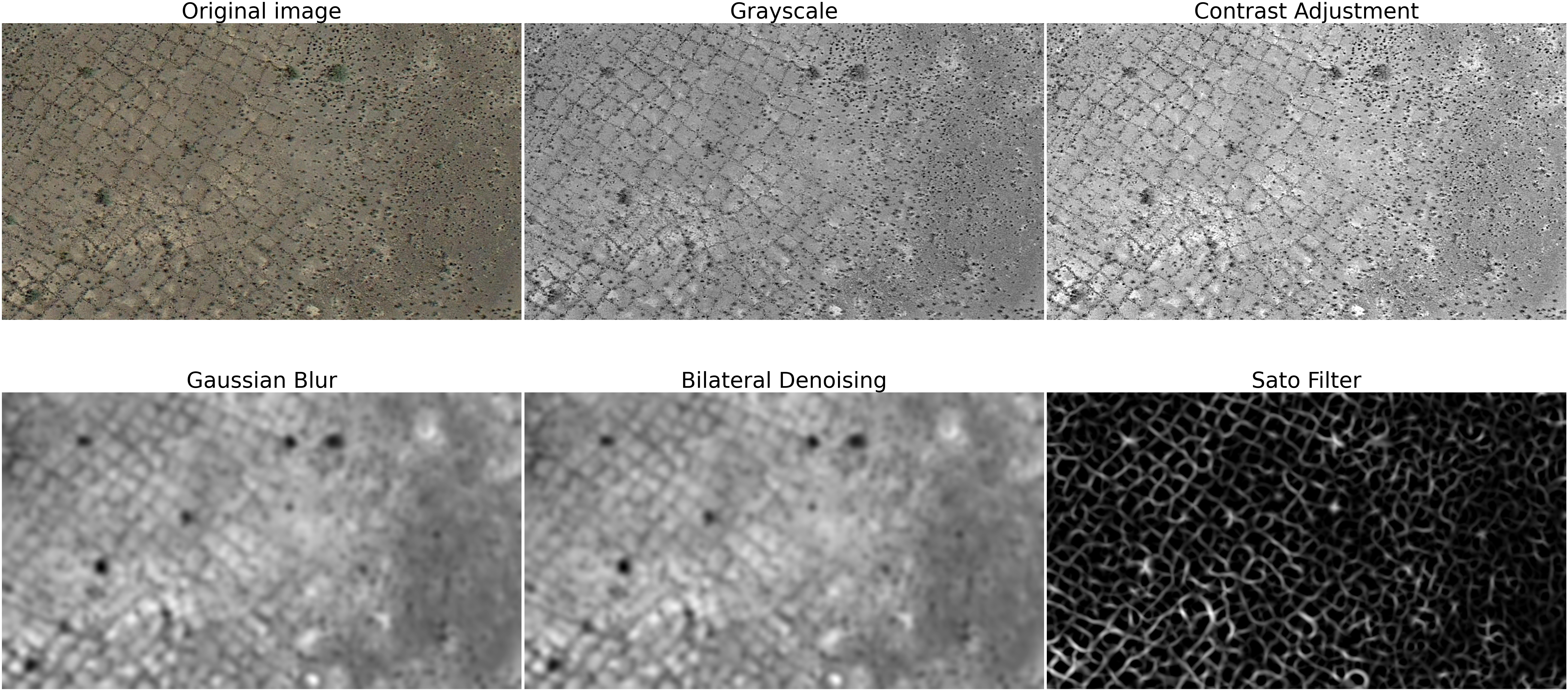
Only two test images (Image 1 and 4) are presented on the poster (see above). The accuracy percentages from Images 2, 3, 5, and 6 are included on the poster but not the images themselves. Instead, I have included them here.
Results:
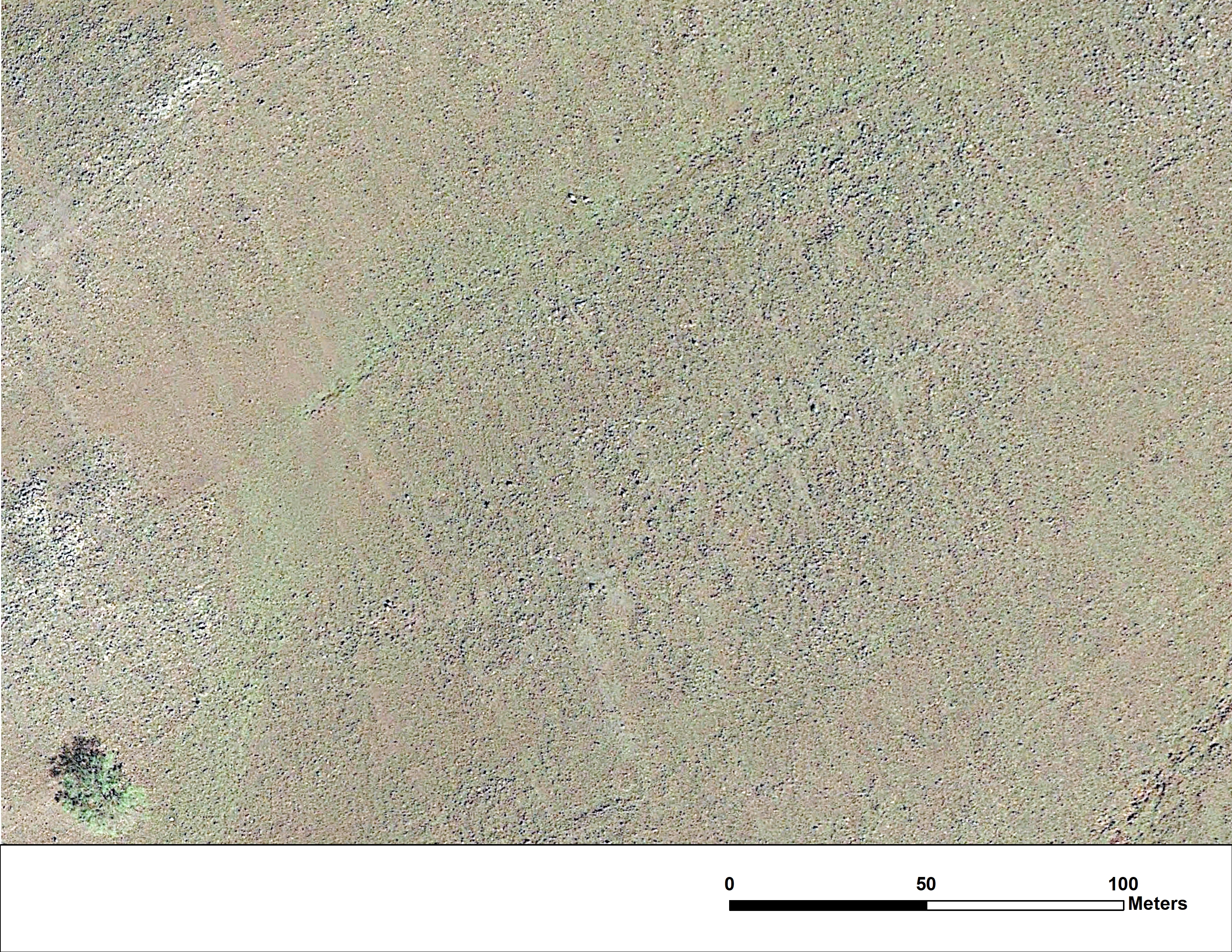
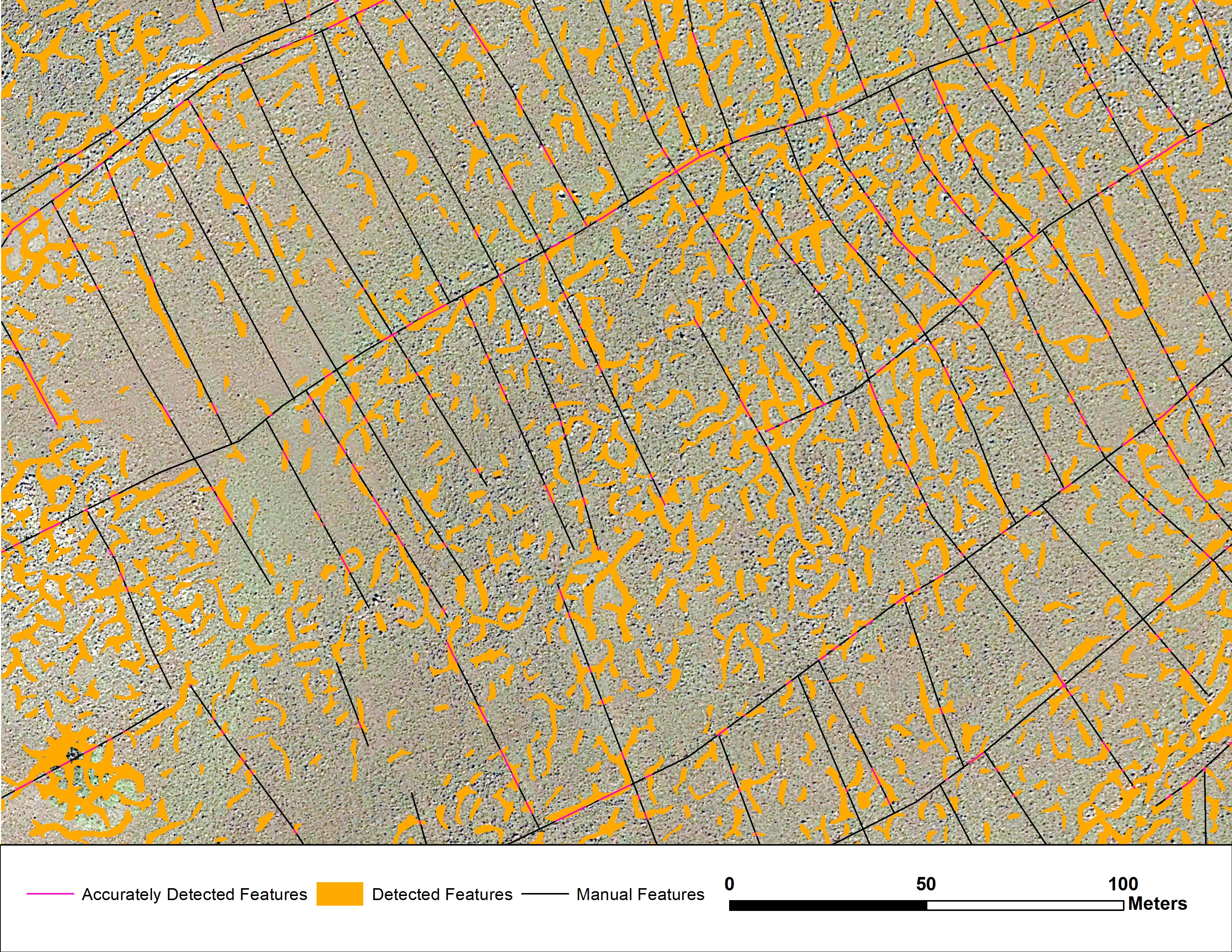
Results:
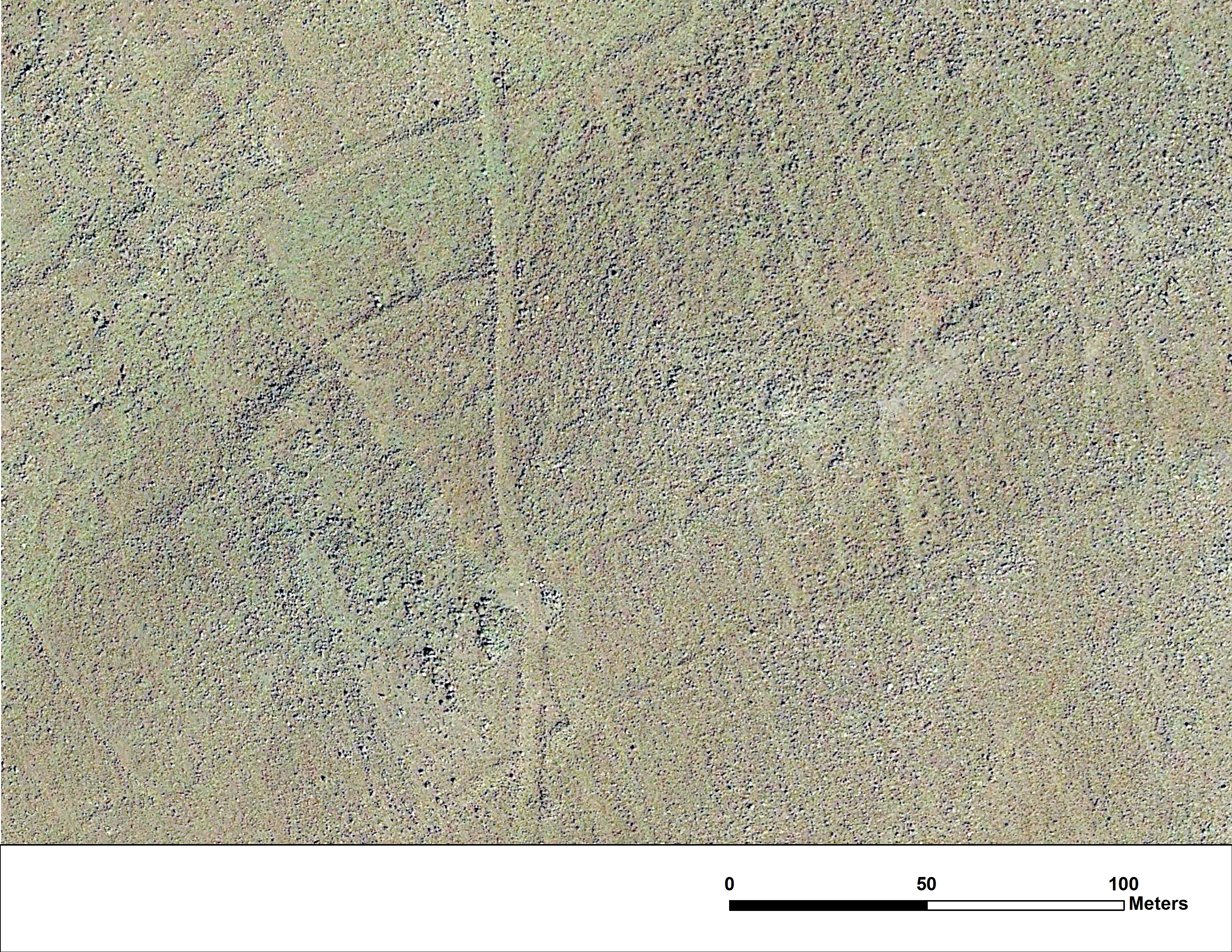
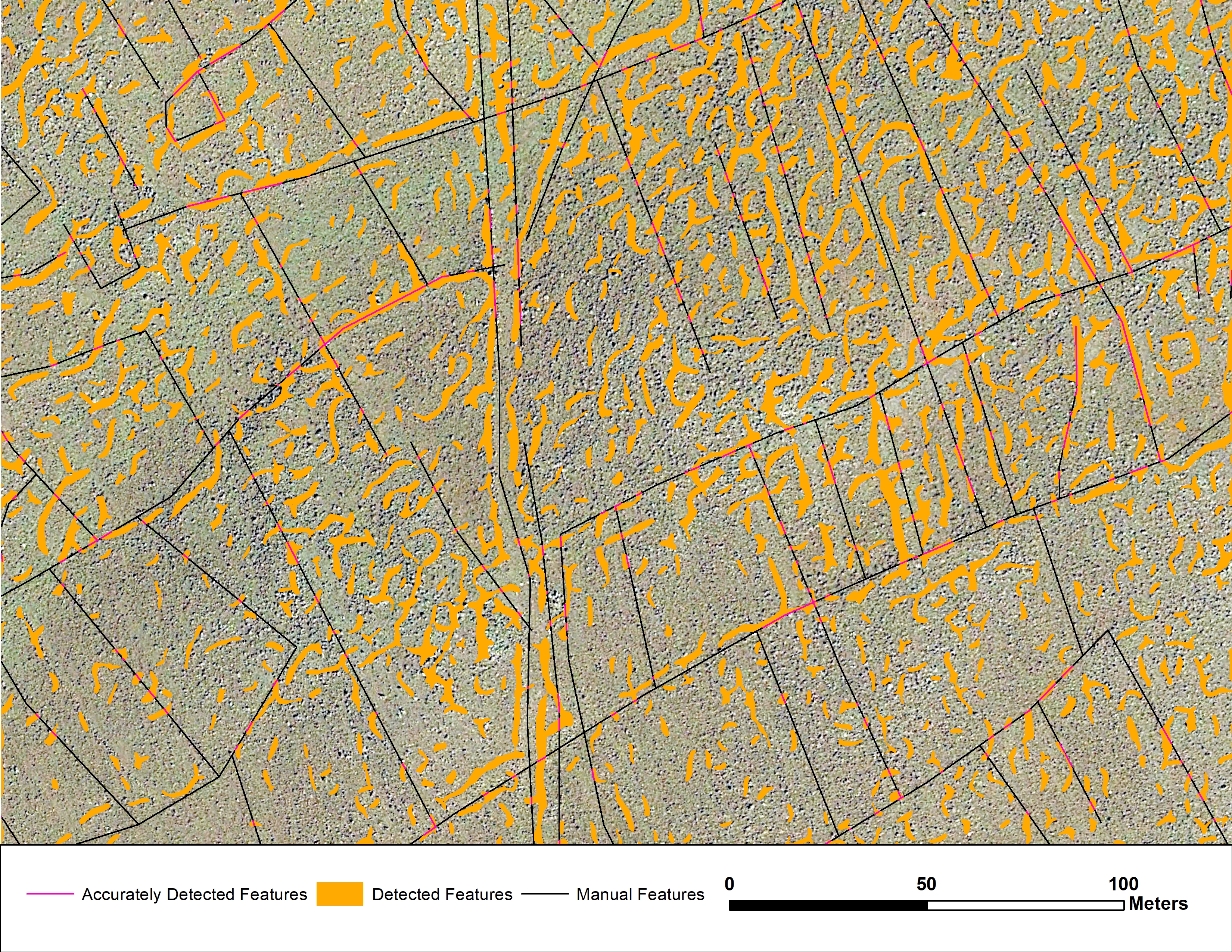
Results:
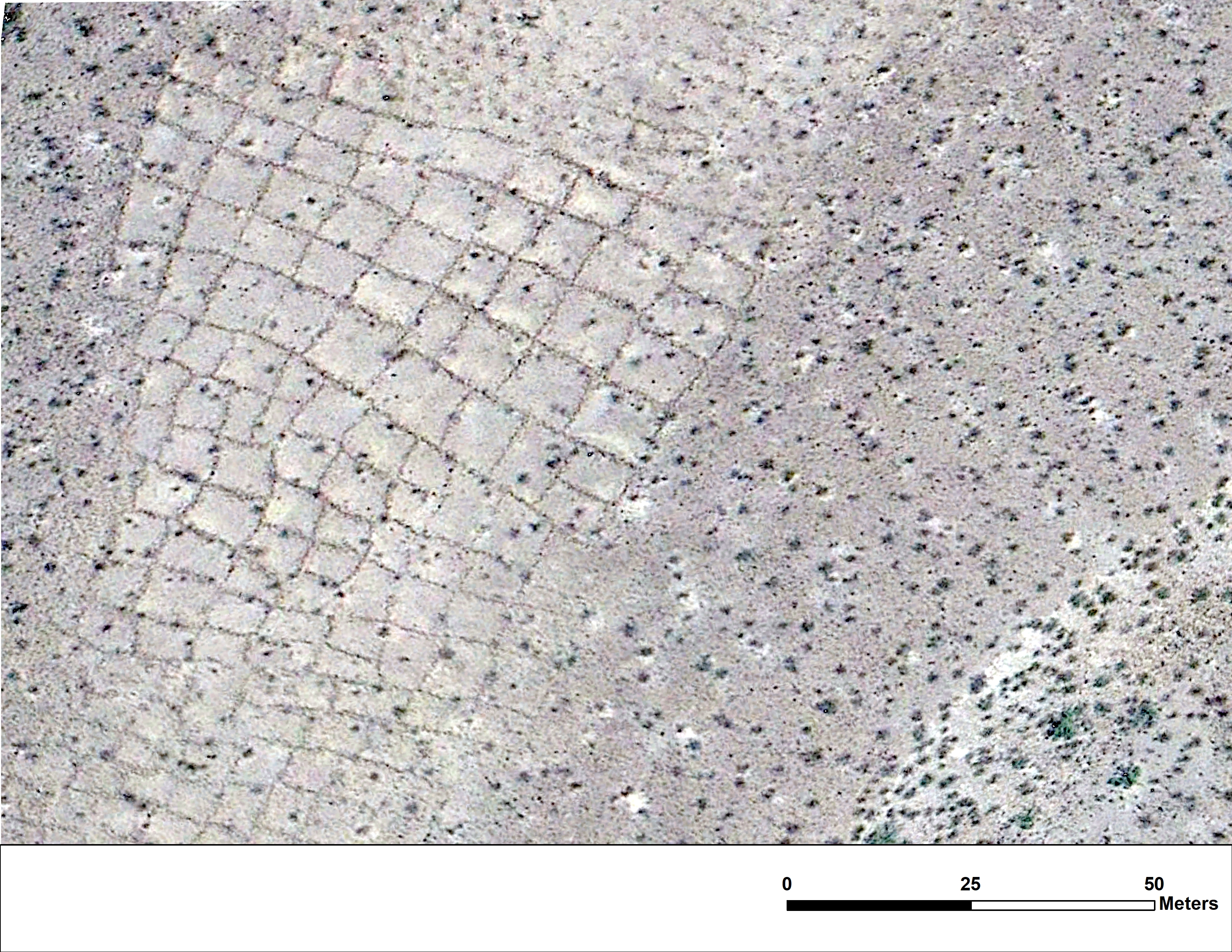
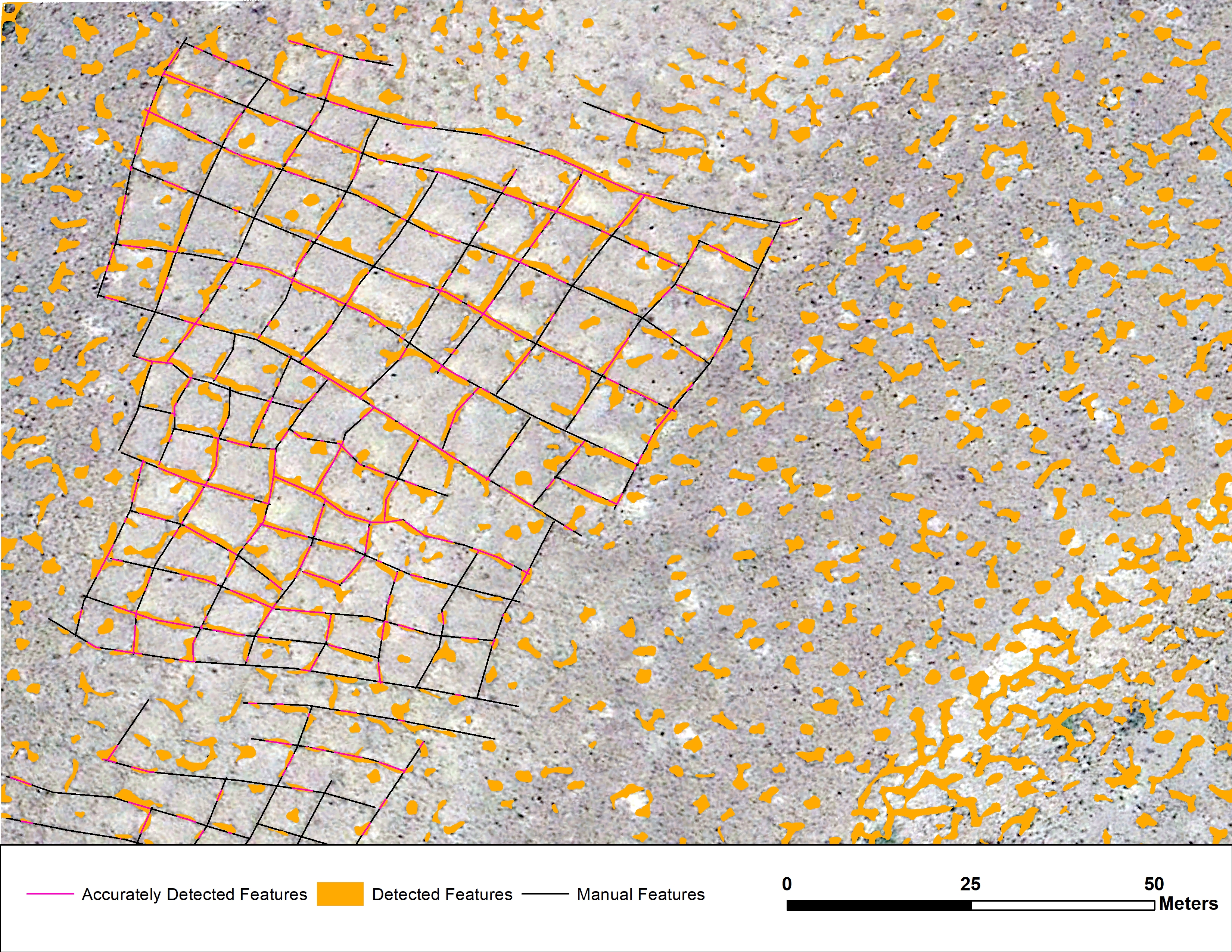
Results:
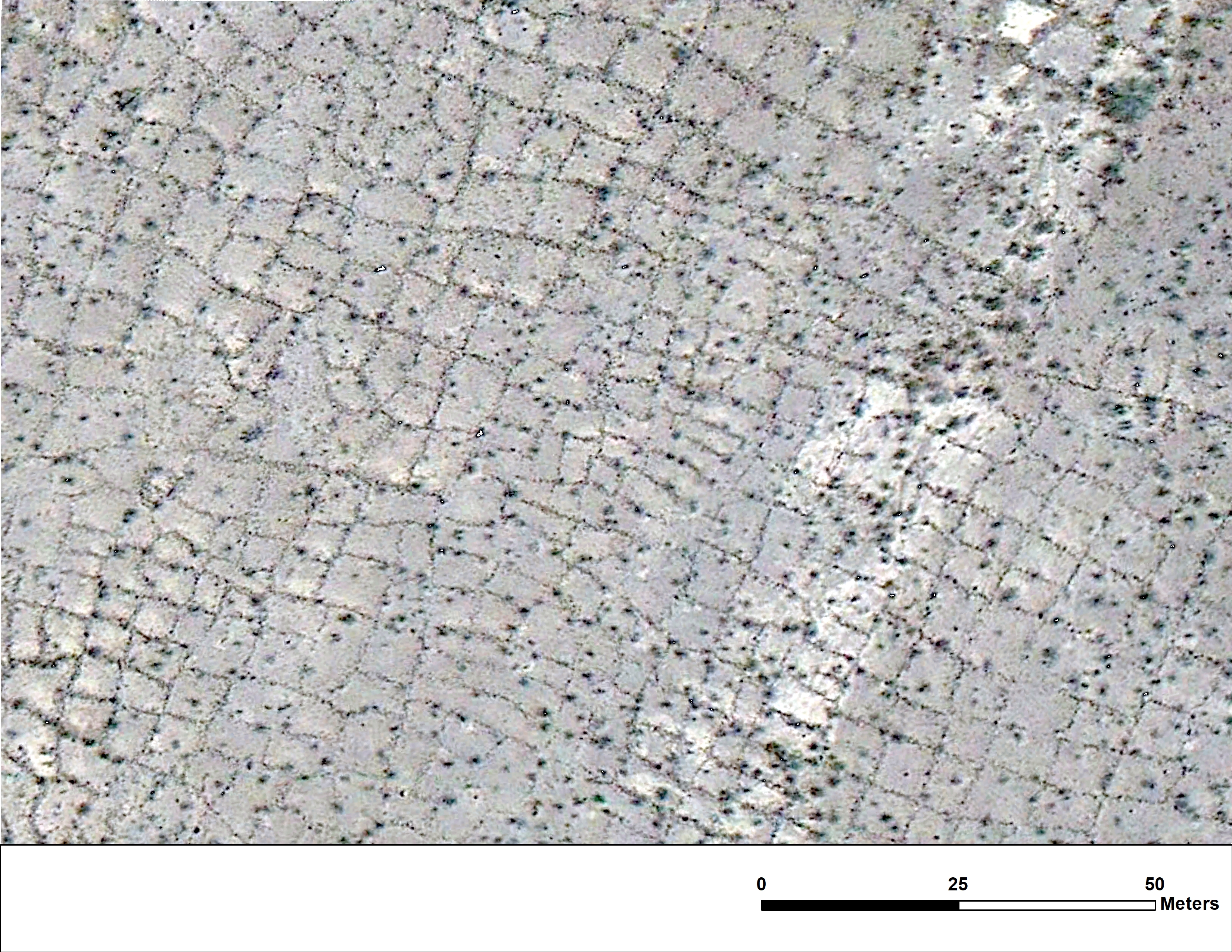
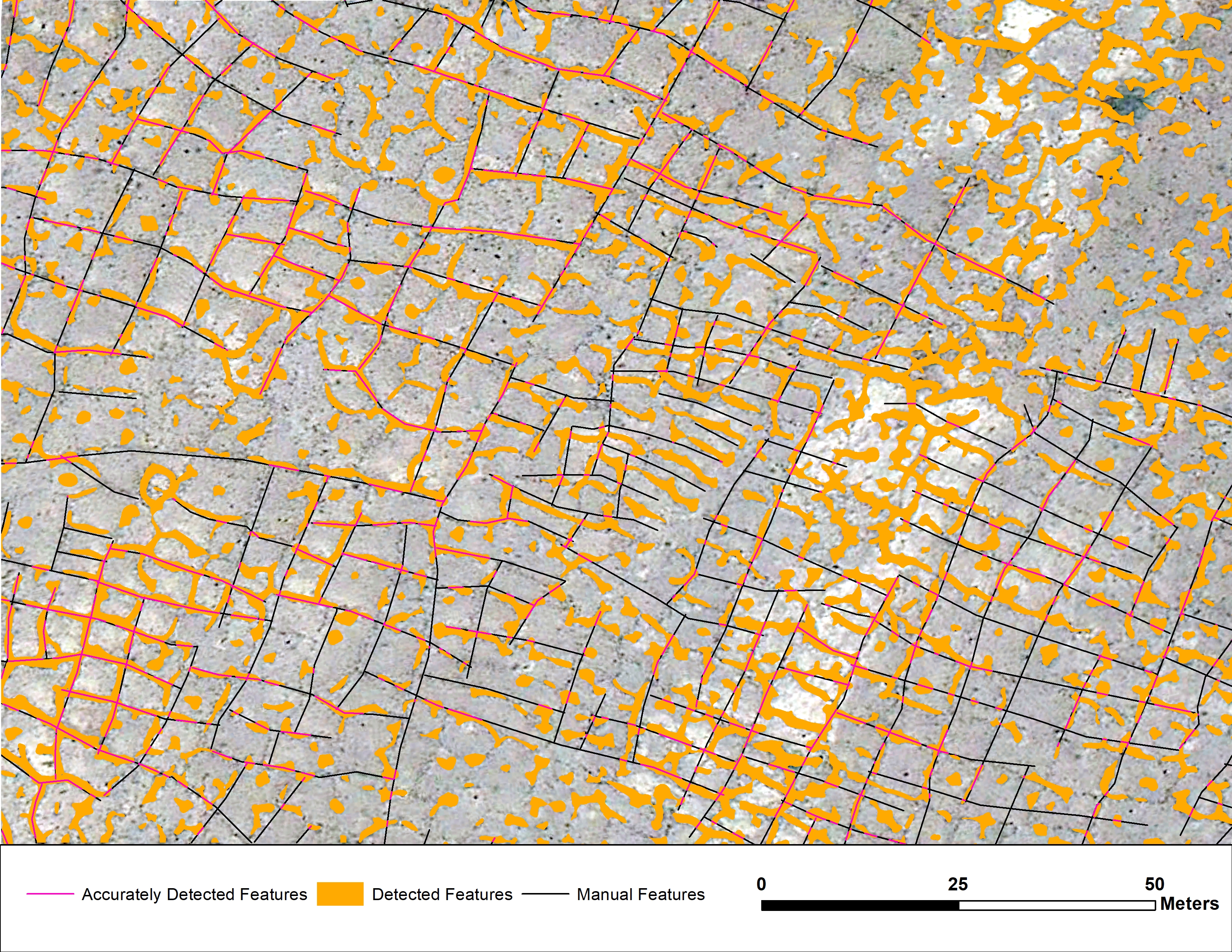
As part of this project, I conducted a review of recently published automated detection research. To see the formatted reference list, click here. For each paper, I noted the data (e.g. LiDAR, satellite imagery etc.) and method(s) tested, both in terms of the broad category (e.g. machine learning) and the more specific category (e.g. Mask R-CNN). If you'd like to take a look at that data, you can view the JSON file here. Note that unicode characters had to be stripped from the author names for export.
This research is part of the H2ARP (Hawaiian Historical and Archaeological Research Program) at the University of New Mexico. Visit the H2ARP webpage to learn more about other ongoing H2ARP research or click "Research" in the navigation bar at the top of this page.